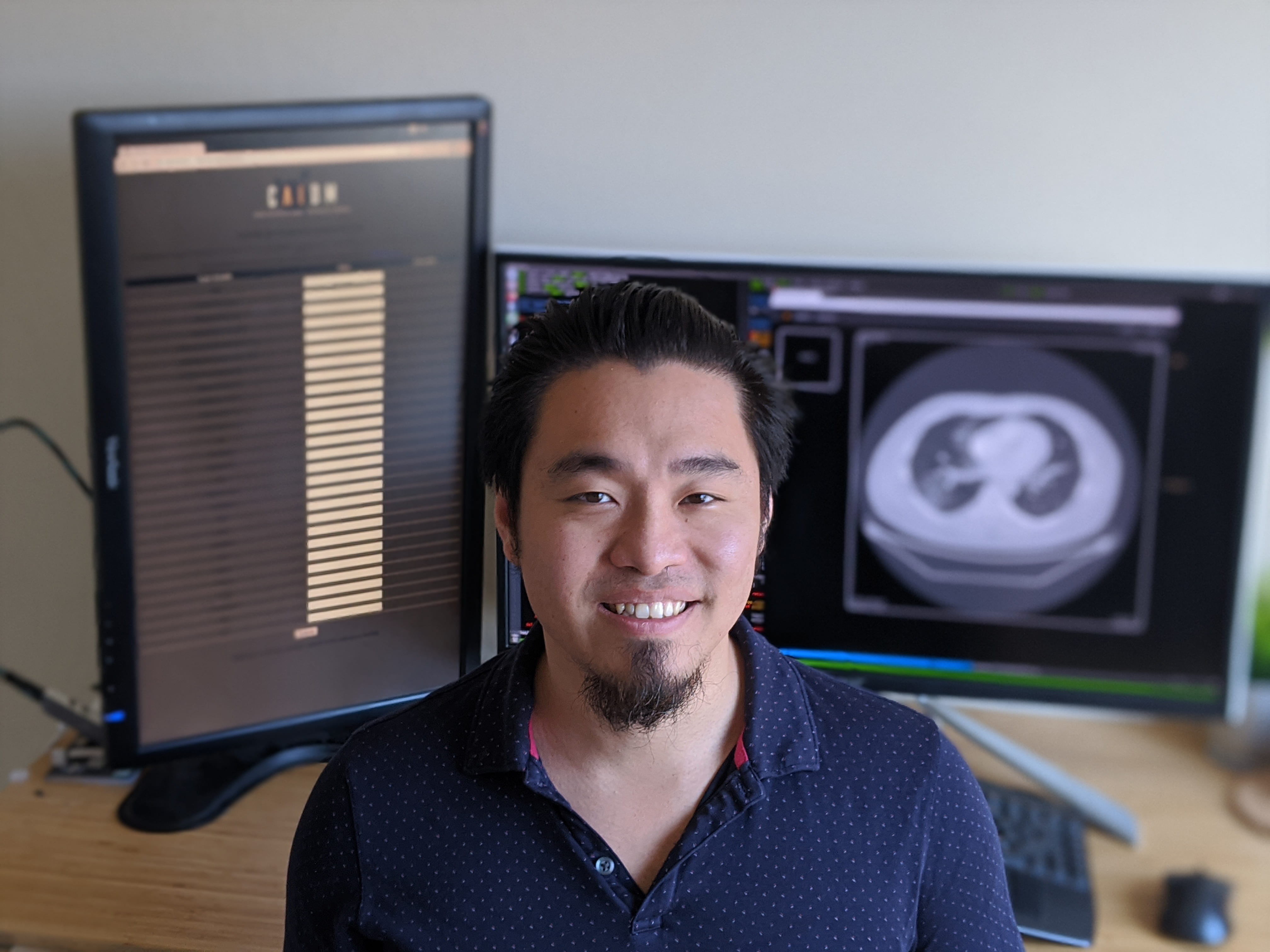Predicting a patient's path
UCI-developed machine learning tool aids doctors’ decision-making

A COVID-19 patient is admitted to the hospital. Lab results indicate certain levels of white blood cells, lymphocytes, creatinine and other markers, while the person’s chart shows their age, gender, body mass index and other factors.
The number of open hospital beds is in flux, and doctors have to decide whether to send the patient to the intensive care unit. The choice hinges on a deceivingly simple question: How likely is it that the individual will need to be intubated and put on a ventilator?
A new machine learning tool developed by UCI Health physician-scientists and researchers across the UCI campus is already helping doctors with that decision by making data-driven assessments of the probable severity of a patient’s condition.
“It’s not the fact that we’re building a model or that it contains these particular features. A lot of people can do that,” says Dr. Peter Chang, a UCI Health neuroradiologist who designed the algorithm and is co-director of UCI’s Center for Artificial Intelligence in Diagnostic Medicine. “But in the course of just a month or so, we’ve gotten the data, built the model, tested it on some cohorts and launched it on a website.”
The Vulnerability Scoring System calculates the likelihood that a COVID-19 patient will need a ventilator based on lab results, personal health factors and demographic information. UCI researchers developed, tested and deployed the tool in just four weeks, and it’s currently in use at UCI Health facilities. The researchers published a study this month detailing how the model accurately predicts critical disease risk.
Data from nearly 80 UCI Health patients were fed into the algorithm so that it can learn trends. Early on, researchers were able to validate the model’s accuracy by comparing its results to data from 40 patients at Emory University in Atlanta. In the next couple of weeks, datasets from the other five University of California medical centers will be added to the tool to refine its predictions.
Recently, UCI Health has been averaging 18 to 20 COVID-19 admissions per day, with roughly half going to the ICU. A quarter of those in the ICU will have to be intubated. Knowing who is likely to need that treatment will prove particularly helpful in the months ahead.
“As the county opens up, as California opens up, more and more people are gathering and interacting, and we might see an uptick in COVID cases,” says Dr. Alpesh Amin, professor and chair of the Department of Medicine and a member of the project team. “As hospital capacity starts becoming burdened, this new machine learning tool will help us balance capacity with correct decision-making. If we can predict how many beds we’ll have filled and how many will be empty based on the risk levels of patients, that will help us with planning, especially in case we get into a surge situation or patient demographics start to change.”
The algorithm currently relies on data from UCI Health patients and predicts patient needs at UCI Health facilities. The calculations will inevitably vary for patients outside Orange County or going to other hospitals. Those people have different demographic profiles and different risk factors, and those hospitals have different infrastructure.
But with some tweaks and recalibrations, the model could easily be adjusted for health systems across Orange County, throughout California or even nationwide. All that would be needed is additional data.
Similarly, the algorithm could be shifted to predict outcomes other than ventilator need, such as patient death. An upcoming project, for instance, will use it to assess likely bed capacity in the ICU. Researchers will also be examining how the tool responds when fresh information is added about a patient’s condition over time.
Additionally, the model helps doctors uncover trends they may not initially see. As the algorithm is fed more data, it teaches itself what factors to weigh most heavily in its assessments, which elements are the most reliable predictors. The initial results from less than 100 cases revealed trends in broad brushstrokes, but more data will allow physicians to make more nuanced prognoses about patients with rarer combinations of risk factors.
“As everyone has seen, there is definitely a strong correlation between intubation and age,” Chang says. “But, at the same time, a disproportionate number of our ICU patients are young. You might see a risk factor and think it explains results, but then the data doesn’t necessarily always support that. That’s why tools like this algorithm are important.”